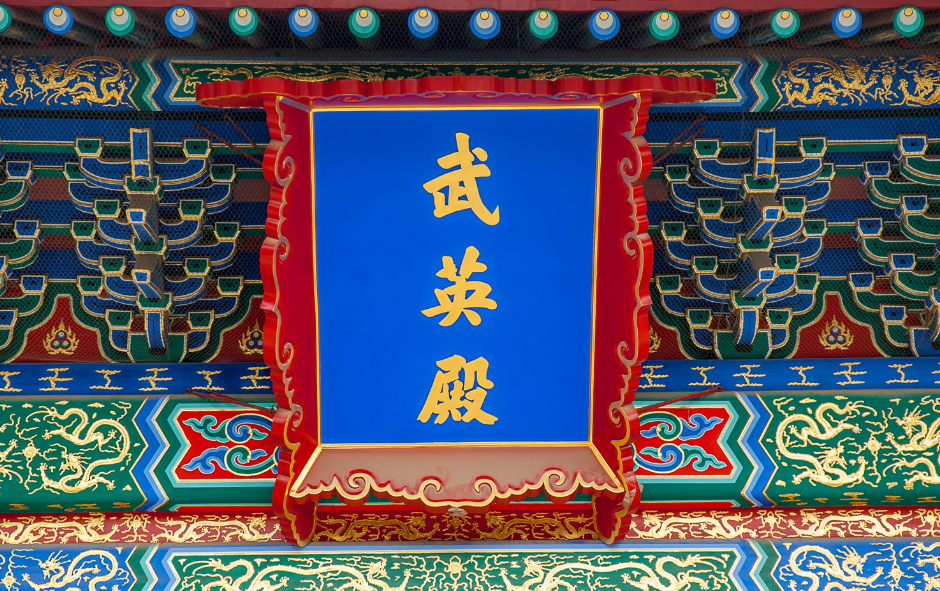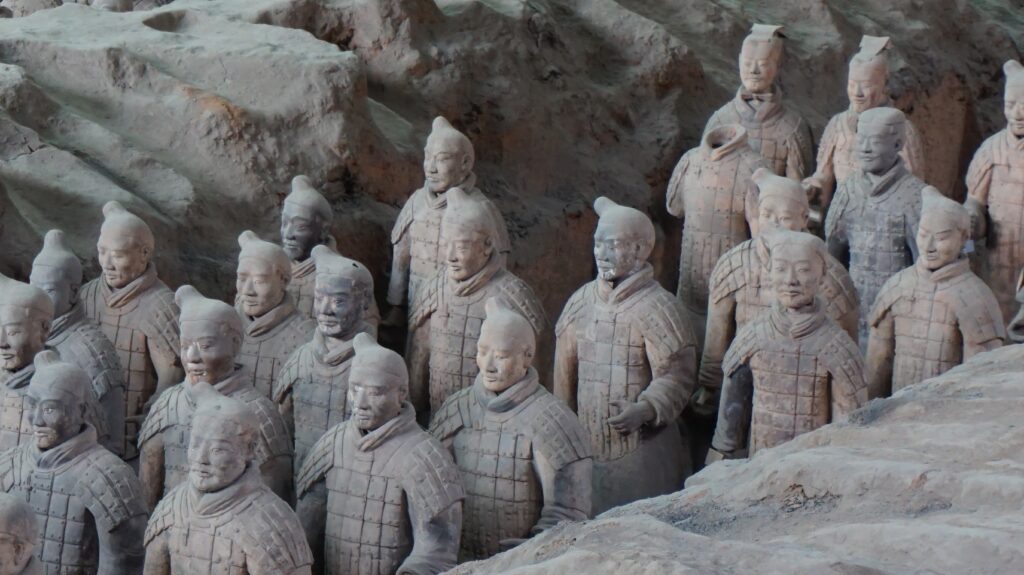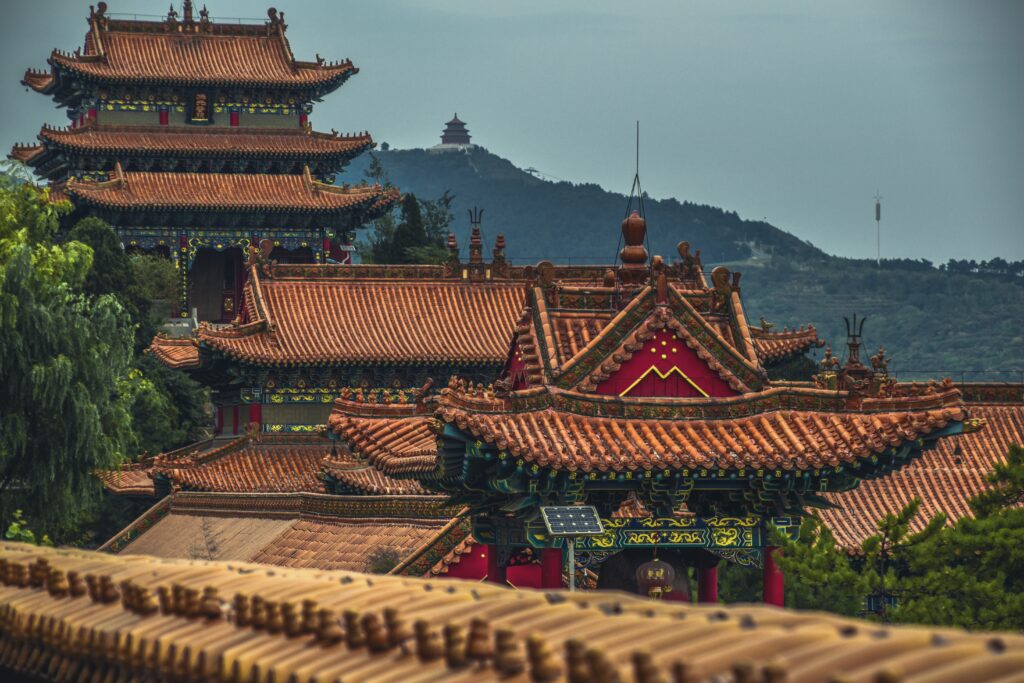China, a nation that stretches back millennia, boasts a history as vast and intricate as its expansive landscapes. At the heart of this history lie its dynasties, the successive ruling families that have shaped its culture, politics, and identity. In this comprehensive exploration, we embark on a captivating journey through time, peeling back the layers of history to uncover the majesty of China’s dynasties. From the earliest dynasties shrouded in myth to the modern era, we will trace their footsteps, illuminate their legacies, and discover the profound impact they’ve had on not just China, but the world at large.
The Ancient Dynasties
Shang Dynasty (c. 1600–1046 BCE)
The Shang Dynasty, emerging from the mists of ancient China, is known for its contributions to art, bronze casting, and governance.
Key Achievements and Innovations
The Shang Dynasty, one of China’s earliest recorded dynasties, is a testament to the profound advancements that marked the dawn of China’s dynastic history. During this era, China’s Dynasties began to lay the foundation for a civilization that would flourish for millennia.
-
-
-
Bronze Casting Brilliance
-
-
The Shang Dynasty was renowned for its mastery of bronze casting, producing intricate ceremonial vessels that showcased their artistic and metallurgical prowess. These artifacts offer a glimpse into the aesthetic and technological achievements of China’s Dynasties during this era.
-
-
-
Oracle Bones- Unearthing Ancient Wisdom
-
-
Among the most intriguing relics of the Shang Dynasty are oracle bones—tortoise shells and animal bones inscribed with early Chinese characters. These inscriptions represent some of the earliest known examples of Chinese writing, providing invaluable insights into the religious and political rituals of China’s Dynasties.
-
-
-
Religious Significance
-
-
Religion played a significant role in Shang society, and this dynasty saw the development of complex belief systems, ancestor worship, and divination practices. These religious aspects would continue to influence China’s Dynasties for centuries to come.
-
-
-
Foundations of Governance
-
-
The Shang Dynasty established a centralized government with a hereditary monarch at its helm. This dynastic system laid the groundwork for the governance structures that would evolve and be refined by subsequent Chinese Dynasties.
-
-
-
Legacy in Bronze and Bone
-
-
The artistic and technological achievements of the Shang Dynasty in bronze casting and oracle bone inscriptions not only shaped the culture of their time but also left a lasting legacy that echoed through the corridors of China’s Dynasties for generations to come.
Zhou Dynasty (c. 1046–256 BCE)
The transition from the Shang Dynasty to the Zhou Dynasty marked a critical period in Chinese history.
Key Achievements and Innovations
As China transitioned from the Shang Dynasty to the Zhou Dynasty, a wave of innovation and transformation swept across the land. The Zhou Dynasty marked a pivotal period in the history of China’s Dynasties, leaving a profound imprint on the nation’s political and cultural landscape.
-
-
-
Mandate of Heaven
-
-
One of the most enduring concepts introduced during the Zhou Dynasty was the “Mandate of Heaven.” This idea held that rulers derived their authority from the divine, and if they ruled justly, they retained the Mandate. If not, they would lose it, paving the way for a new dynasty. This concept would shape the legitimacy of China’s Dynasties for centuries to come.
-
-
-
Feudalism and Governance
-
-
The Zhou Dynasty introduced a system of feudalism, where regional lords were granted land and authority in exchange for loyalty and military service. This approach to governance provided a degree of stability, fostering the growth of regional centers and solidifying the notion of a unified state.
-
-
-
Cultural Blossoming
-
-
The Zhou Dynasty was a period of cultural flourishing. It saw the compilation of foundational texts like the “Book of Songs” (Shi Jing) and the “Book of Changes” (Yi Jing). These literary works became touchstones of Chinese culture and wisdom, influencing thinkers and leaders throughout China’s Dynasties.
-
-
-
Bronze Continuity
-
-
Building upon the bronze-casting expertise of the Shang Dynasty, the Zhou Dynasty continued to produce exquisite bronze artifacts, albeit with stylistic changes. These artifacts provide a visual timeline of China’s Dynasties’ artistic development and technological prowess.
-
-
-
Philosophical Ideals
-
-
The Zhou Dynasty laid the philosophical groundwork for China’s Dynasties with the emergence of Confucianism, Daoism, and Legalism. These schools of thought would shape Chinese philosophy and politics for centuries, offering various paths to moral governance and personal virtue.
-
-
-
Legacy of Governance and Philosophy
-
-
The legacy of the Zhou Dynasty extends beyond its physical artifacts. It gave birth to enduring concepts of governance, philosophy, and cultural ideals that continue to resonate throughout China’s Dynasties and the nation’s history.
The First Imperial Dynasty
Qin Dynasty (221–206 BCE)
-
- Under the leadership of the formidable Emperor Qin Shi Huang, the Qin Dynasty achieved unification and left a lasting legacy.
Key Achievements and Innovations
The Qin Dynasty, under the visionary rule of Emperor Qin Shi Huang, marked a pivotal moment in the evolution of China’s Dynasties. It was a period of remarkable achievements and innovations that laid the groundwork for the imperial system.
-
-
-
-
Unification of China
-
-
-
The crowning achievement of the Qin Dynasty was the unification of China under a single centralized government. This unified China’s Dynasties that had been divided for centuries and established a template for future dynasties.
-
-
-
-
Construction of the Great Wall
-
-
-
Emperor Qin Shi Huang initiated the construction of the Great Wall of China, one of the most iconic symbols of China’s Dynasties. This monumental project, aimed at defending against northern invaders, left an indelible mark on China’s landscape and history.
-
-
-
-
Standardization
-
-
-
The Qin Dynasty standardized various aspects of Chinese culture, including writing, weights and measures, and currency. This standardization facilitated communication and trade, helping to forge a cohesive national identity that persisted through future China’s Dynasties.
-
-
-
-
The Terracotta Army
-
-
-
Among the most astonishing discoveries of the Qin Dynasty is the Terracotta Army, a vast collection of life-sized clay soldiers, horses, and chariots buried with Emperor Qin Shi Huang. This incredible archaeological find provides a glimpse into the military might and artistic achievements of the time.
-
-
-
-
The Legalist Philosophy
-
-
-
The Qin Dynasty embraced Legalism as its governing philosophy, emphasizing strict laws and centralized authority. This philosophy influenced subsequent China’s Dynasties and their approaches to governance.
-
-
-
-
Legacy of Unity
-
-
-
Although the Qin Dynasty was relatively short-lived, its legacy endured. The unification of China, standardization efforts, and the construction of the Great Wall established a foundation upon which China’s Dynasties built and evolved.
The Glorious Han Dynasty
Han Dynasty (206 BCE–220 CE)
The Han Dynasty is often heralded as a golden age in Chinese history, characterized by expansion, prosperity, and cultural innovation.
Key Achievements and Innovations
The Han Dynasty, often hailed as China’s “Golden Age,” witnessed a period of immense cultural, political, and technological progress. It left an indelible mark on China’s Dynasties, shaping the nation’s identity for centuries.
-
-
-
-
Expanding Borders and Prosperity
-
-
-
Under the Han Dynasty, China’s Dynasties experienced territorial expansion, reaching its zenith in terms of size and influence. This expansion facilitated the flourishing of trade along the Silk Road, bringing wealth and exotic goods to China.
-
-
-
-
Cultural Flourishing
-
-
-
The Han Dynasty nurtured a vibrant cultural scene. Literary giants like Sima Qian and Ban Zhao, the creation of historical texts like the “Records of the Grand Historian,” and the development of Confucianism solidified the Han Dynasty’s cultural legacy.
-
-
-
-
The Silk Road
-
-
-
The establishment of the Silk Road during the Han Dynasty facilitated exchanges with distant lands and cultures. This network of trade routes not only enriched China economically but also contributed to the exchange of ideas and technologies.
-
-
-
-
Paper Invention
-
-
-
The Han Dynasty’s invention of paper revolutionized communication and record-keeping. This innovation profoundly influenced education, literature, and bureaucracy in China’s Dynasties and beyond.
-
-
-
-
Silk and Porcelain
-
-
-
The Han Dynasty is renowned for its silk production and the development of fine porcelain. These artistic achievements remain highly regarded and coveted to this day.
-
-
-
-
Confucian Governance
-
-
-
The Han Dynasty embraced Confucianism as the state philosophy, promoting virtue and ethical governance. This philosophy continued to guide China’s Dynasties’ rulers and administrators for centuries.
-
-
-
-
Legacy of Prosperity and Culture
-
-
-
The legacy of the Han Dynasty endures as a symbol of China’s Dynasties’ golden era, marked by territorial expansion, cultural flourishing, and technological advancements.
The Age of Division
Three Kingdoms Period (220–280 CE)
Amidst political fragmentation, this period gave rise to legendary figures and epic battles, immortalized in Chinese literature and culture.
Key Achievements and Innovations
The Three Kingdoms Period marked a turbulent era of political fragmentation and military conflict, but it also witnessed remarkable achievements and innovations that left a profound impact on China’s Dynasties.
-
-
-
-
Legendary Figures and Epic Battles
-
-
-
The Three Kingdoms Period is characterized by a rich tapestry of legendary figures such as Liu Bei, Guan Yu, and Cao Cao, and epic battles like the Battle of Red Cliffs. These stories, immortalized in the “Romance of the Three Kingdoms,” continue to captivate audiences worldwide.
-
-
-
-
Innovation in Warfare
-
-
-
Military innovations, including advances in siege warfare and naval tactics, emerged during this period. These innovations contributed to the strategic brilliance seen in the battles and campaigns of China’s Dynasties.
-
-
-
-
Cultural and Literary Contributions
-
-
-
Despite the chaos of war, the Three Kingdoms Period produced significant cultural and literary works, including historical records and poetry. These texts offer valuable insights into the period’s social and intellectual milieu.
-
-
-
-
Regional Development
-
-
-
The division of China into three major states—Shu, Wu, and Wei—led to regional development and specialization, influencing economic and cultural practices that would endure through later China’s Dynasties.
-
-
-
-
Legacy of Heroism
-
-
-
The heroism, strategy, and loyalty demonstrated by figures of the Three Kingdoms Period continue to inspire and resonate in Chinese culture and storytelling, reinforcing the enduring legacy of this tumultuous era.
Jin Dynasty (265–420 CE)
The Jin Dynasty’s efforts at reunification and its cultural contributions played a significant role in shaping China’s future.
Key Achievements and Innovations
Emerging from the Three Kingdoms Period, the Jin Dynasty sought to reunify China and contributed to China’s Dynasties’ legacy through its achievements in governance and culture.
-
-
-
-
-
Reunification Efforts
-
-
-
-
The Jin Dynasty’s primary objective was reunification, and they succeeded in bringing northern China under their rule. This reunification laid the groundwork for later dynasties and helped restore a sense of unity among the Chinese people.
-
-
-
-
-
Confucianism Revival
-
-
-
-
The Jin Dynasty saw a revival of Confucianism as the dominant philosophical and ethical system. This renewed focus on Confucian values influenced China’s Dynasties’ political and social structures.
-
-
-
-
-
Literary Legacy
-
-
-
-
The Jin Dynasty produced significant literary works, including historical texts and poetry. These writings documented the period’s events and contributed to the preservation of Chinese cultural heritage.
-
-
-
-
-
Bronze Culture
-
-
-
-
Building upon China’s Dynasties’ historical affinity for bronze, the Jin Dynasty continued to produce elaborate bronze artifacts. These artifacts reflect the dynasty’s cultural and artistic contributions.
-
-
-
-
-
Legacy of Reunification and Culture
-
-
-
-
Although the Jin Dynasty’s reign was relatively short, its efforts in reunifying China and promoting Confucian values left an indelible legacy that would influence later China’s Dynasties.
The Sui and Tang Dynasties
Sui Dynasty (581–618 CE)
The Sui Dynasty’s construction of the Grand Canal transformed transportation, uniting the north and south of China.
Key Achievements and Innovations
The Sui Dynasty, though brief, made significant contributions to China’s Dynasties, including groundbreaking achievements in infrastructure and governance.
-
-
-
-
Grand Canal Construction
-
-
-
The hallmark achievement of the Sui Dynasty was the construction of the Grand Canal, linking the Yellow and Yangtze Rivers. This engineering marvel facilitated transportation, trade, and cultural exchange, cementing the Sui Dynasty’s legacy.
-
-
-
-
Unified Currency and Legal Code
-
-
-
The Sui Dynasty implemented a unified currency system and legal code, contributing to administrative efficiency and fostering a sense of national identity across China’s Dynasties.
-
-
-
-
Reunification of China
-
-
-
The Sui Dynasty reunited northern and southern China after centuries of division, setting the stage for the flourishing Tang Dynasty. This reunification was a pivotal moment in China’s Dynasties’ history.
-
-
-
-
Legacy of Infrastructure
-
-
-
The Grand Canal’s enduring presence and the Sui Dynasty’s administrative reforms left a lasting legacy, improving connectivity and governance in subsequent China’s Dynasties.
Tang Dynasty (618–907 CE)
The Tang Dynasty is celebrated for its cultural flourishing, trade along the Silk Road, and governance.
Key Achievements and Innovations
The Tang Dynasty is often celebrated as a pinnacle of Chinese civilization, characterized by cultural brilliance, economic prosperity, and political stability.
-
-
-
-
Cultural Flourishing
-
-
-
The Tang Dynasty witnessed a renaissance of Chinese culture. Poetry, painting, and music thrived, with luminaries like Li Bai and Du Fu leaving an indelible mark on Chinese literature.
-
-
-
-
International Diplomacy and Trade
-
-
-
The Tang Dynasty’s cosmopolitanism and strategic diplomacy fostered diplomatic relations with neighboring states and the famed Silk Road. This led to the exchange of ideas, technologies, and goods, enriching China’s Dynasties.
-
-
-
-
Government Reform
-
-
-
The Tang Dynasty instituted far-reaching government reforms, including the equal-field system and the development of a merit-based civil service examination. These measures enhanced governance and ensured the longevity of China’s Dynasties.
-
-
-
-
Advancements in Science and Technology
-
-
-
Tang China was at the forefront of scientific and technological advances, including printing, gunpowder, and astronomical observations. These innovations continue to influence the modern world.
-
-
-
-
Buddhism and Religious Tolerance
-
-
-
The Tang Dynasty promoted religious tolerance, fostering the spread of Buddhism in China. The dynasty’s support of Buddhism had a profound impact on Chinese culture and art.
-
-
-
-
Legacy of Cultural Brilliance
-
-
-
The Tang Dynasty’s cultural achievements, governance reforms, and contributions to art and science continue to be celebrated as a defining era in China’s Dynasties’ history.
The Song and Yuan Dynasties
Song Dynasty (960–1279 CE)
A time of technological advancement and political challenges, the Song Dynasty played a pivotal role in China’s history.
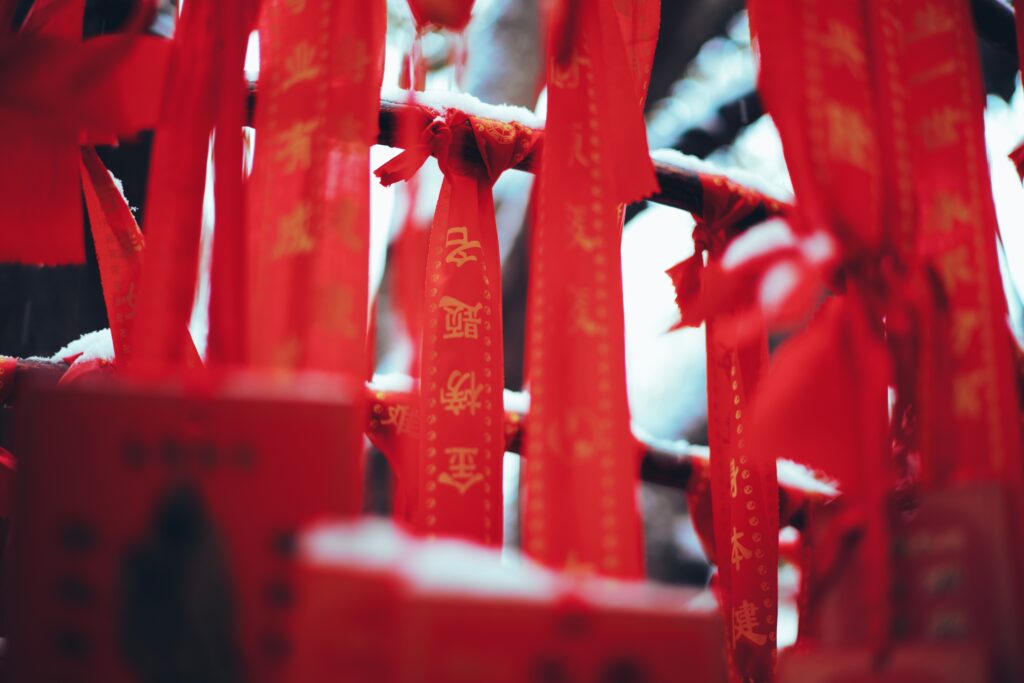
Key Achievements and Innovations
The Song Dynasty was a period of technological innovation and intellectual advancement, leaving an enduring legacy that shaped China’s Dynasties and the world.
-
-
-
-
Technological Marvels
-
-
-
The Song Dynasty gave rise to groundbreaking inventions, including movable type printing, the magnetic compass, and gunpowder. These innovations revolutionized communication, navigation, and warfare.
-
-
-
-
Confucian Revival and Neo-Confucianism
-
-
-
The Song Dynasty witnessed a revival of Confucianism, evolving into Neo-Confucianism, which became the dominant philosophical and ethical system. This ideology profoundly influenced China’s Dynasties’ governance and culture.
-
-
-
-
Prosperous Economy
-
-
-
Economic prosperity during the Song Dynasty led to the growth of a vibrant urban culture, marked by bustling marketplaces, tea houses, and a flourishing art scene.
-
-
-
-
The Three Perfections
-
-
-
The Song Dynasty saw the convergence of painting, calligraphy, and poetry, collectively known as the “Three Perfections.” This artistic synergy produced some of China’s most renowned masterpieces.
-
-
-
-
Maritime Achievements
-
-
-
The Song Dynasty undertook ambitious maritime expeditions, including those led by Admiral Zheng He. These voyages extended China’s influence to distant lands and showcased its naval prowess.
-
-
-
-
Legacy of Innovation and Culture
-
-
-
The Song Dynasty’s innovations in technology and culture continue to resonate globally, underlining its significance in the annals of China’s Dynasties’ history.
Yuan Dynasty (1271–1368 CE)
The Yuan Dynasty, marked by Mongol rule, witnessed remarkable cultural exchanges and influences.
Key Achievements and Innovations
The Yuan Dynasty, marked by Mongol rule, was a period of cultural exchange and unique governance that left an indelible mark on China’s Dynasties.
-
-
-
-
Mongol Conquest
-
-
-
The Yuan Dynasty was established by the Mongols under Kublai Khan. Mongol rule represented a unique chapter in China’s Dynasties, bringing both challenges and cultural exchanges.
-
-
-
-
Cultural Synthesis
-
-
-
The Yuan Dynasty witnessed the convergence of Chinese, Mongol, and other regional cultures. This cultural synthesis enriched China’s Dynasties’ artistic expression and cuisine.
-
-
-
-
Yuan Porcelain and Art
-
-
-
Yuan Dynasty porcelain, known for its distinctive blue and white designs, remains highly regarded in the world of art and ceramics. Yuan art also embraced innovative themes and styles.
-
-
-
-
Kublai Khan’s Reforms
-
-
-
Kublai Khan instituted administrative reforms, including the use of paper currency, postal systems, and the promotion of Buddhism. These measures influenced subsequent China’s Dynasties and governance.
-
-
-
-
Marco Polo and Foreign Exploration
-
-
-
The Yuan Dynasty was visited by Italian explorer Marco Polo, whose travel accounts introduced China to the Western world. This exchange marked a significant moment in global history.
-
-
-
-
Legacy of Cultural Exchange
-
-
-
The Yuan Dynasty’s cultural exchange with the Mongols and other regions contributed to China’s Dynasties’ diverse and vibrant cultural heritage.
The Ming and Qing Dynasties
Ming Dynasty (1368–1644 CE)
The Ming Dynasty, renowned for the Forbidden City and the voyages of Admiral Zheng He, left a profound mark on China’s culture and identity.
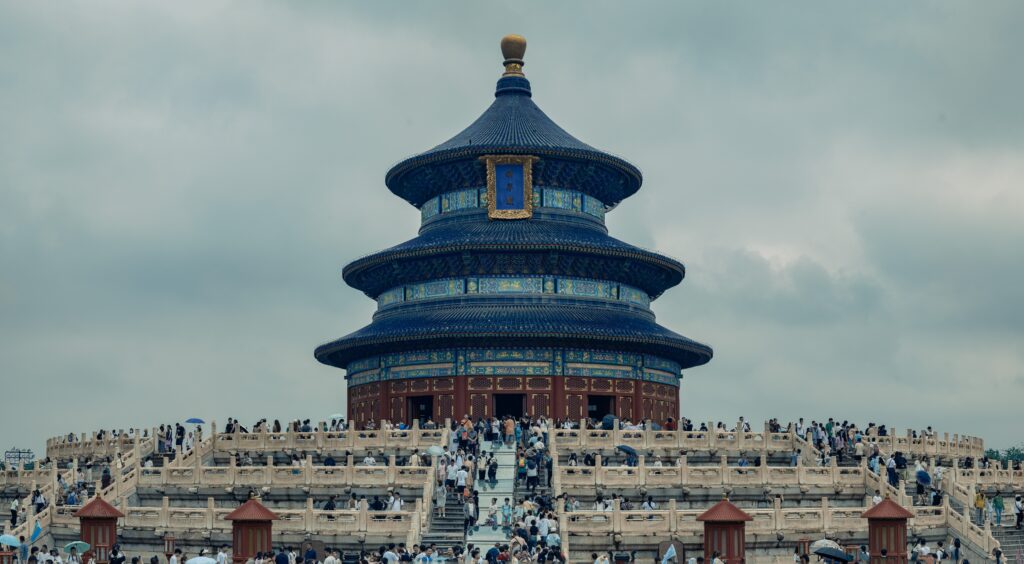
Key Achievements and Innovations
The Ming Dynasty is celebrated for its architectural marvels, cultural achievements, and maritime expeditions that expanded China’s influence beyond its borders.
-
-
-
- The Forbidden City
-
-
The Ming Dynasty is renowned for constructing the awe-inspiring Forbidden City in Beijing. This imperial palace complex stands as a symbol of China’s Dynasties’ grandeur and architectural prowess.
-
-
-
- Maritime Voyages
-
-
Admiral Zheng He’s legendary voyages during the Ming Dynasty showcased China’s naval power and global reach. These expeditions fostered diplomatic and cultural exchanges with distant lands, leaving an indelible mark on the world.
-
-
-
- Porcelain and Artistry
-
-
Ming porcelain, characterized by its exquisite blue and white designs, remains highly sought after by collectors worldwide. The era also witnessed advancements in painting and calligraphy.
-
-
-
- Cultural Flourishing
-
-
The Ming Dynasty was a time of cultural flowering, with literary giants like Tang Xianzu and the publication of epic novels like “Journey to the West” and “Water Margin.”
-
-
-
- Legacy of Cultural Richness
-
-
The Ming Dynasty’s architectural, artistic, and literary contributions continue to define China’s cultural heritage, making it a beacon of artistic achievement in China’s Dynasties.
Qing Dynasty (1644–1912 CE)
The Qing Dynasty, established by the Manchu conquest, saw both China’s expansion and decline.
Key Achievements and Innovations
The Qing Dynasty, established by the Manchu conquest, witnessed both territorial expansion and eventual decline, marking the final chapter of China’s Dynasties’ rule.
-
-
-
-
Territorial Expansion
-
-
-
The Qing Dynasty extended China’s Dynasties’ borders to their greatest territorial extent, incorporating vast regions of Inner Asia, Tibet, and Taiwan.
-
-
-
-
Artistic Legacy
-
-
-
The Qing Dynasty continued to produce exquisite porcelain, jade, and paintings, with an emphasis on traditional Chinese aesthetics.
-
-
-
-
Challenges and Decline
-
-
-
The Qing Dynasty faced internal strife, external pressures, and a series of conflicts known as the Opium Wars, leading to its eventual decline and the end of China’s Dynasties.
-
-
-
-
Transition to a Republic
-
-
-
The Qing Dynasty’s fall marked a historic turning point, transitioning China from dynastic rule to a republic, as the nation grappled with political and social transformations.
-
-
-
-
Legacy of Transition
-
-
-
The Qing Dynasty’s challenges and decline had a profound impact on modern China’s identity, governance, and political landscape, leaving a legacy that reverberates to this day.
Related Articles:
Chinese Calligraphy and Painting: A Rich Cultural Legacy
Health Benefits of Chinese Calligraphy and Painting
Best Ways Foreign Students Can Celebrate Chinese New Year
Guanxi: Unlocking the Power of Relationships in Chinese Business
Checklist for International Students Heading to China
Modern China and the End of Dynasties
The fall of the Qing Dynasty
The decline of the Qing Dynasty and the forces that led to its ultimate collapse.
Complex Factors and Consequences
The fall of the Qing Dynasty marked the end of China’s Dynasties and a transition to a new era, shaped by a complex interplay of internal and external forces.
-
-
-
-
Internal Unrest
-
-
-
Internal factors, including corruption, social inequality, and a series of internal rebellions, weakened the Qing Dynasty’s rule and contributed to its downfall.
-
-
-
-
External Pressures
-
-
-
External pressures, such as Western imperialism and the Opium Wars, further weakened China’s Dynasties’ authority and sovereignty.
-
-
-
-
Transition to a Republic
-
-
-
The fall of the Qing Dynasty led to the establishment of the Republic of China, marking a profound shift in China’s political landscape and governance.
China’s Dynasties-Transition to a Republic
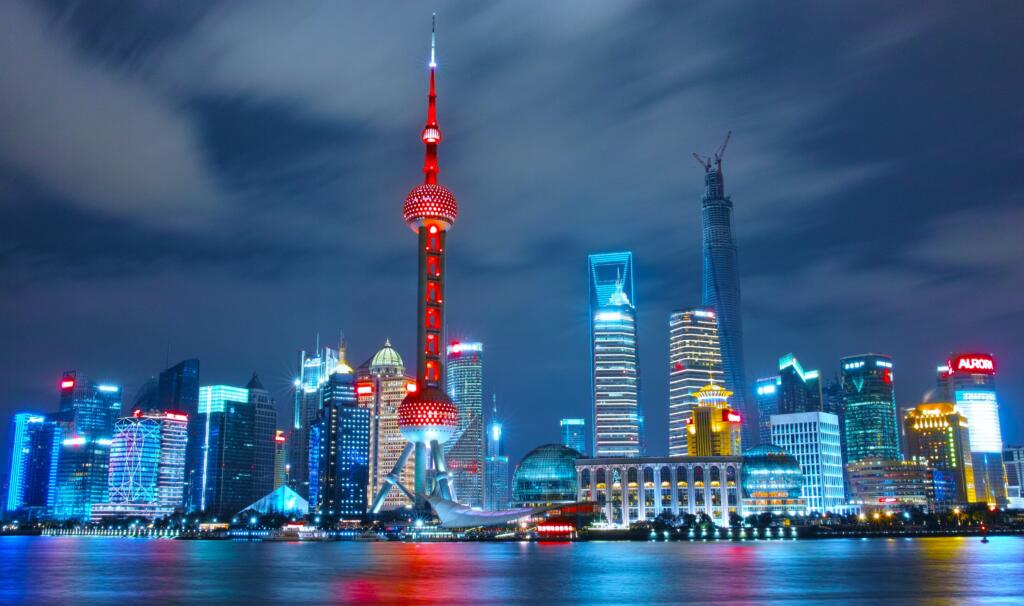
Emergence of a New Era
The transition to a republic was a period of political experimentation, social reform, and significant changes that laid the foundation for modern China.
-
-
-
-
Republic of China
-
-
-
The establishment of the Republic of China brought forth new political ideologies and experiments, including democratic governance and the rule of law.
-
-
-
-
Challenges and Transformations
-
-
-
The early years of the republic were marked by political turbulence, regionalism, and societal transformations as China navigated the complexities of modernization.
Legacy of dynasties in contemporary China
Influences on Modern Identity
The enduring legacy of China’s Dynasties is embedded in the fabric of modern China, shaping its culture, governance, and global presence.
-
-
-
-
Cultural Continuity
-
-
-
Elements of China’s Dynasties’ culture, philosophy, and traditions continue to influence contemporary China, reinforcing a sense of continuity.
-
-
-
-
National Identity
-
-
-
The rich history of China’s Dynasties remains a source of pride and a foundational element of modern Chinese national identity.
-
-
-
-
Global Impact
-
-
-
The legacies of China’s Dynasties extend beyond its borders, influencing global culture, art, philosophy, and cuisine.
As we conclude this captivating journey through China’s dynastic history, the majesty of these dynasties emerges as a testament to the enduring spirit of a nation. Their legacy is woven into the very fabric of China’s culture, identity, and global influence.
Leave your comments below!
